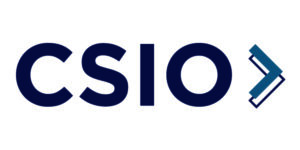Schwab's Kleintop: Time to Add Global Stocks

“I see a relatively brighter picture in international stocks in the second half of the year,” he said, adding that equities from global developed markets may outperform U.S. stocks this year for the first time in a long while. Global stocks, like European energy, materials and financial equities, tend to benefit more from rising inflation, he said, and “that’s really helping to drive stronger growth in Europe than in the U.S.”
Rather than focusing on specific sectors, Kleintop recommends a broad international exposure within a diverse portfolio. “We’ve started to see a shift in the cycle back to an environment that favors international stocks,” he said.
Risks and Opportunities
Kleintop favors broad holdings across Asia, Europe, Latin America and parts of the Middle East, rather than limiting investments to certain industries, given that correlations across stock markets have fallen to 20-year lows and diversification benefits portfolios when sectors and markets shift more independently from each other.
“I think a broad index is the way to do it,” Kleintop said, noting that a broad international ETF is a way to add exposure and benefit from low correlations and a strong earnings picture. “If I had to pick a region I probably like Europe the best given valuations and stimulus and earnings growth. I don’t think this is an environment where we should be making big bets.”
Economic uncertainty over inflation, war in Europe, central bank rate policies and China’s COVID-19 lockdowns may have eased modestly from earlier in the year, Kleintop said, but ongoing risks could cause continued stock market volatility in the second half.
Excess Inventory
One of the biggest risks is the possible move from product shortages to gluts, he said.
“We might start to see a lot of these shortages that have really been part of the inflation problem may begin to melt away and we may be replacing them with another problem, which is gluts,” he said, noting that several major retailers recently reported excess inventories that may prompt them to cut prices. Demand for semiconductors also appears to be easing, he said, citing comments this week from an Intel executive. (Semiconductor stocks fell Wednesday in response, Bloomberg reported.)
Gluts can be worse than shortages and can pressure earnings, Kleintop said, calling them an underappreciated risk. “It’s a problem to companies that have been reliant on pricing power to help them sustain their earnings picture,” he said, expressing hope that gluts will remain limited rather than developing more broadly.
Other key risks include the possibility, especially closer to winter, that natural gas supplies from Russia to Europe will be cut off, which “would pull Europe into a recession,” he said.
Further COVID-19 breakouts in China also pose a risk. China’s doing a fairly good job trying to keep production and ports open but its population isn’t adequately vaccinated, so “we’re still at risk of supply chain shutdowns” and potential recession in the world’s second largest economy, Kleintop said.
Buybacks and Short-Duration Stocks
The second half also brings opportunities, he said, citing short-duration stocks and companies engaging in share buybacks in addition to diversification in international equities.
Short-duration stocks, which offer more immediate cash flows, tend to outperform when interest rates rise, he noted. These low price-to-cash-flow stocks have been consistent outperformers globally this year and that may continue as a theme in the second half, Kleintop said. Short-duration stocks are more dominant in international markets, he noted in his outlook.
Companies that have announced or increased share buybacks present another opportunity. They appear to be benefiting from more price support than others as they have outperformed this year, with results fairly pronounced in Europe, he said, citing another potential ongoing theme for the second half.






